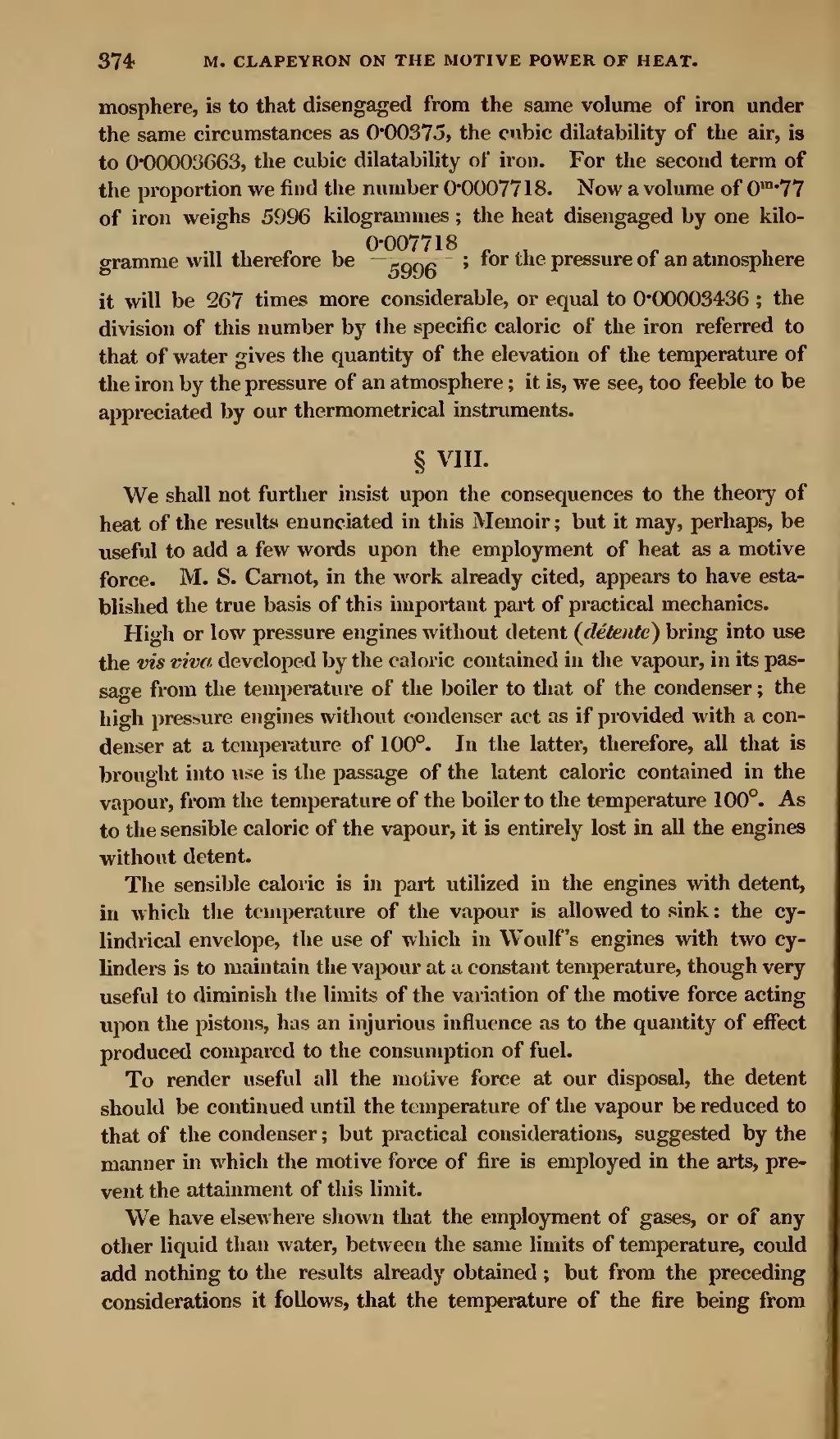mosphere, is to that disengaged from the same volume of iron under the same circumstances as , the cubic dilatability of the air, is to , the cubic dilatability of iron. For the second term of the proportion we find the number . Now a volume of of iron weighs kilogrammes; the heat disengaged by one kilogramme will therefore be ; for the pressure of an atmosphere it will be times more considerable, or equal to ; the division of this number by the specific caloric of the iron referred to that of water gives the quantity of the elevation of the temperature of the iron by the pressure of an atmosphere; it is, we see, too feeble to be appreciated by our thermometrical instruments.
§ VIII.
We shall not further insist upon the consequences to the theory of heat of the results enunciated in this Memoir; but it may, perhaps, be useful to add a few words upon the employment of heat as a motive force. M. S. Carnot, in the work already cited, appears to have established the true basis of this important part of practical mechanics.
High or low pressure engines without detent (détente) bring into use the vis viva developed by the caloric contained in the vapour, in its passage from the temperature of the boiler to that of the condenser; the high pressure engines without condenser act as if provided with a condenser at a temperature of 100°. In the latter, therefore, all that is brought into use is the passage of the latent caloric contained in the vapour, from the temperature of the boiler to the temperature 100°. As to the sensible caloric of the vapour, it is entirely lost in all the engines without detent.
The sensible caloric is in part utilized in the engines with detent, in which the temperature of the vapour is allowed to sink: the cylindrical envelope, the use of which in Woulf's engines with two cylinders is to maintain the vapour at a constant temperature, though very useful to diminish the limits of the variation of the motive force acting upon the pistons, has an injurious influence as to the quantity of effect produced compared to the consumption of fuel.
To render useful all the motive force at our disposal, the detent should be continued until the temperature of the vapour be reduced to that of the condenser; but practical considerations, suggested by the manner in which the motive force of fire is employed in the arts, prevent the attainment of this limit.
We have elsewhere shown that the employment of gases, or of any other liquid than water, between the same limits of temperature, could add nothing to the results already obtained; but from the preceding considerations it follows, that the temperature of the fire being from








